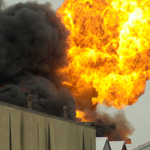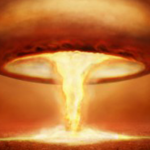Combustible Dust: What is it and How to Prevent an Explosion
If you spill corn meal in your kitchen, you don’t think of it as having the potential to be dangerous. But certain kinds of dust actually do have the potential to explode. In fact, during the last 35 years there have been over 500 explosions in U.S. grain handling facilities alone, with 180 people killed and another 675 injured.
Manufacturers that work with powder bulk storage know that certain dusts and powders can put their plants and employees at risk. How can you tell which dusts are combustible and under what circumstances? In this blog post, we’ll answer the question, “What is combustible dust?” and provide you with other valuable information about dust dangers.
Q: What is combustible dust?
A: Combustible dust is made up of fine particles that have the potential to catch fire. They can explode when they come into contact with air while a source of ignition is present, such as a spark from static.
Q: What are some examples of combustible dust?
A: Combustible dust can come from organic materials, such as sugar, flour, grains and wood; various metals; and other materials such as certain plastics and rubber.
From cork to zinc dust, whey powder to phenolic resin, a number of materials are hazardous when they are processed in powdered form. If it’s not captured and disposed of properly, when dust is created it will settle on various surfaces including on rafters, roofs, equipment and in ducts creating a combustible environment.
Q: How do combustible dust explosions happen?
A: When dust particles exist in the right concentration in the air within a confined space they may explode if there’s enough heat and an ignition source. Ignition can happen when there is exposure to a flame or something as small as a spark caused by static.
Q: What are some real-world examples of combustible dust explosions?
A: A somber example of a dust explosion is from 2008 in Georgia at a large sugar refinery built in 1916. A dust explosion occurred, leading to the deaths of 14 people and injuries to 38 more.
In 2010 a West Virginia titanium manufacturing plant had a dust explosion, killing three people.
Q: How can I prevent combustible dust explosions?
A: Keeping your facility as free of dust as possible is one of the main ways to reduce risk. Risk assessments should be periodically conducted to determine what safety measures should be put in place, including processes that should be implemented to collect dust and dispose of it safely.
There are also a number of products available to help your facility control dust. Powder Process-Solutions offers dust collection systems that are custom designed to capture, convey, and collect dust safely. They comply with OSHA and NFPA regulations and help you maintain the efficiency, sanitation and safety that you need at your powder processing company.
Discover how a BFM fitting can also help prevent dust explosions.





